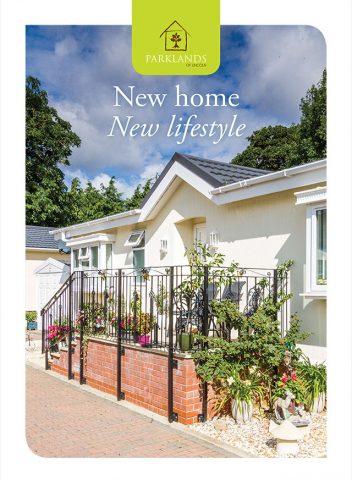
Essentially, there is not a vast difference between residential park homes and lodges other than style and their exterior appearance. Residential park homes usually have a stucco finish, whereas lodges use wood or cannexel which is best described as PVC with a wooden plank appearance.
Park homes and lodges tend to get grouped under the same umbrella by people with little knowledge of the industry/ies, but it’s often the case that the two types of home are noticeably separate when researching developments.
From my own experience, it’s a rarity to come across developments that offer both styles of mobile home and consider them on level pegging e.g. fully residential licensing (we’ll come onto that later). It is more common to see developments that exclusively offer either residential park homes or lodges.
Lodge developments tend to be found in more isolated, forested and/or touristic destinations and it would be fair to say that their exterior appearance tends to be more fitting with their environment. The same could be said for residential park homes. They are often found in more urban areas, where the stucco finish resembles that of rendered homes that you may come across in the local area. The stucco finish provides the park home with a finish that looks like many other bungalows. At Parklands of Lincoln, we offer residential park homes exclusively.
Appearance at Parklands is important to us. We felt that offering and mixing the two exterior finishes on different homes within the same development compromised on the appearance of the park. In our opinion (and the opinion of the residents), the stucco exterior’s consistency on the park enhances the parks aesthetics.
From our own point of view, we took the decision to sell residential park homes because the local semi-rural location was more fitting to this appearance. Importantly, template residential park homes (the home models you will see in manufacturer brochures) tend to be designed for more permanent living (hence their name) with floorplans that separate rooms and commonly offer more storage space.
Lodge designed floorplan’s are more open plan. A kitchen, dining and living room can often be found in the same ‘room’. For some, this causes concerns with energy bills, but this is ultimately a personal decision and we will look at park home layouts in a future article. At this stage, I should add that floorplans from either associated design can be transferred to the other, so, for example, if you liked the floorplan of a specific lodge and wanted it in a residential park home, most park home manufacturers will have no problems with accepting such a request.
Earlier in the article I made reference to lodge and residential park homes and residential licensing. Park home licensing deserves an article unto itself, but I just wanted to take this opportunity to elaborate on this slightly. The history of lodge homes and residential park homes has meant that historically they have veered towards either holiday or permeant accommodation and so mobile home operator licenses have been previously awarded for their historical use. For people wanting a lodge home – exterior et al for residential use, you must look carefully at the licensing of the development and ensure that it has full residential use and not second home or holiday home status if you desire to live permanently at the development.
At Parklands of Lincoln, consistent with our residential park homes, we have a license for fully residential use, so prospective buyers can be assured that their home – and the development are here for the long term without future concerns about the legal status of their home.




